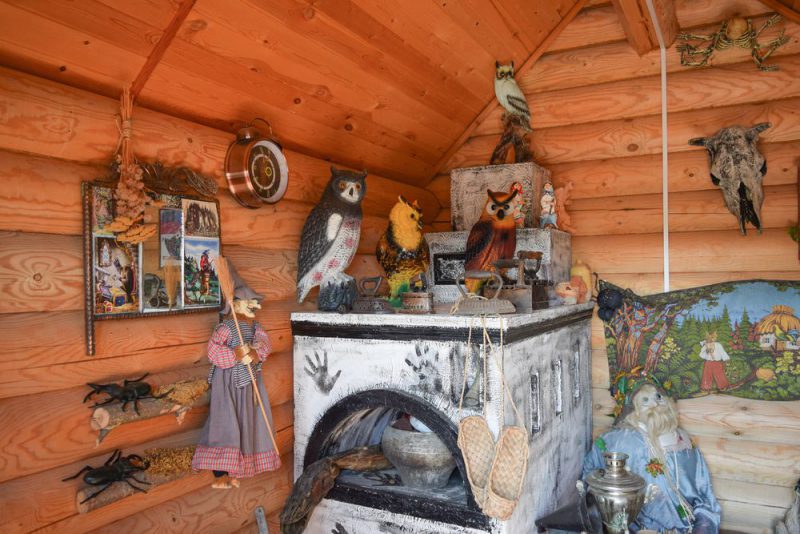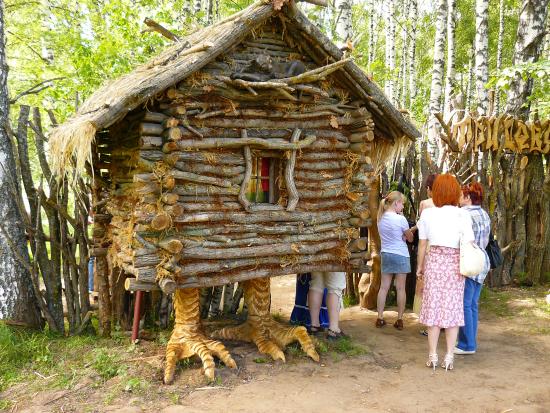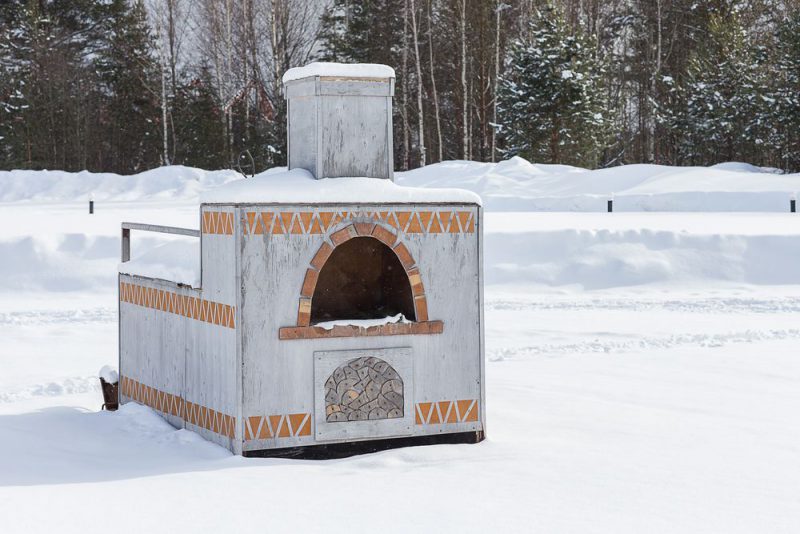Magical attributes in the Russian fairy tales
Do you like fairy tales as Russians do? Even if you don’t, you have probably already heard (or read in our articles) about the Russian Baba Yaga and Koschei the Immortal – the main evil characters of Russian fairy tales. However, Russian fairy tales are interesting not only because of the amazing personalities, but also thanks to different and unusual magical attributes. In this story we’ll tell you about the most famous of them.

The most famous: hut on chicken legs
As we have already mentioned, Baba Yaga is one of the central characters of Russian fairy tales who possesses not only magical powers but also magical objects. The most famous of them is her house – a hut on chicken legs that serves as a buffer between the kingdom of the living and the kingdom of the dead. The protagonist of a tale usually enters the house of Baba Yaga and crosses the line between the worlds by uttering the spell “Hut, hut, turn your back to the forest and the front to me!”.

However, the name “hut on chicken legs” appeared due to the incorrect translation of the ancient chronicles where it was stated that the frame of a new house was put on “smoked” (not “chicken”) stumps (the Russian word куриные sounds today as “of chicken” but in reality comes from the verb курить – to produce smoke when burning aromatic substances).
Flying mortar
Another magical object of Baba Yaga is her mortar. Unlike the witches described in Western fairy tales that fly on a broomstick, Baba Yaga prefers to move around in a mortar which besides the aircraft also serves as a pot in which she cooks various potions and stores magical herbs.

Magic clew as a navigator
Baba Yaga has a large arsenal of magical things. In some Russian fairy tales, she shows mercy for the main character and gives him a magical clew of threads which unfolds and leads the main character to the desired goal bypassing various obstacles on the way. After performing its function, the clew returns to Baba Yaga by itself.
The cook that is always with you: “samobranka” tablecloth
One of the most amazing (and our favorite) magical objects of Russian fairy tales is the magic tablecloth which at any time can feed and give water to its owner. The owner just needs to unfold it and say the magic words “Drink, eat!”. After that, various dishes appear on the tablecloth and disappear immediately after the owner has eaten.
The “samobranka” tablecloth seems to be an extremely positive object, however, this is not quite the case. Many folklorists consider “samobranka” an attribute of the afterlife, the world of the dead, where food is always abundant compared to real life in which people had to get their food with great efforts and difficulties.
Stove as a mean of transport
The stove in Russian fairy tales occupies one of the main and central places, although it is the least magical object compared to the others. Usually the stove is a symbol of life, comfort, warmth, security. Some researchers of fairy tales see a female mother image in the stove.

However, in the tale about Emelya and the pike, the stove appears as a mean of transport which Emelya (the main character) uses to move around. The folklorists still can not explain where this unexpected connection between the stove and the transport came from.
Rejuvenating apples and living water
Who does not want to preserve beauty and youth and never grow old? People have been dreaming about it for a long time. In Russian folk culture there is a fairy tale about rejuvenating apples and living water which returned youth and strength to the old and blind king.
You can easily guess why these two familiar and usually non-magical objects got so powerful in the fairy tales. Apples are the source of many nutrients and vitamins that can really give an anti-aging effect (assuming, of course, that apples are constantly present in your diet), and pure natural spring water gives the body vitality and strength.
Conclusion
Russian fairy tales are full of miracles and unexpected characters and stories. All of them create a unique magical world, plunging into which we also want to ride a stove for or to eat from a “samobranka” tablecloth.
What attribute of Russian fairy tales did you like the most, and which one would you like to try? Do you remember any attributes that are not mentioned here? Let us know in the comments!

Culturologist, professor of Russian as a foreign language and promoter of Russian culture.
Aleksandra gives Russian lessons via Skype.






